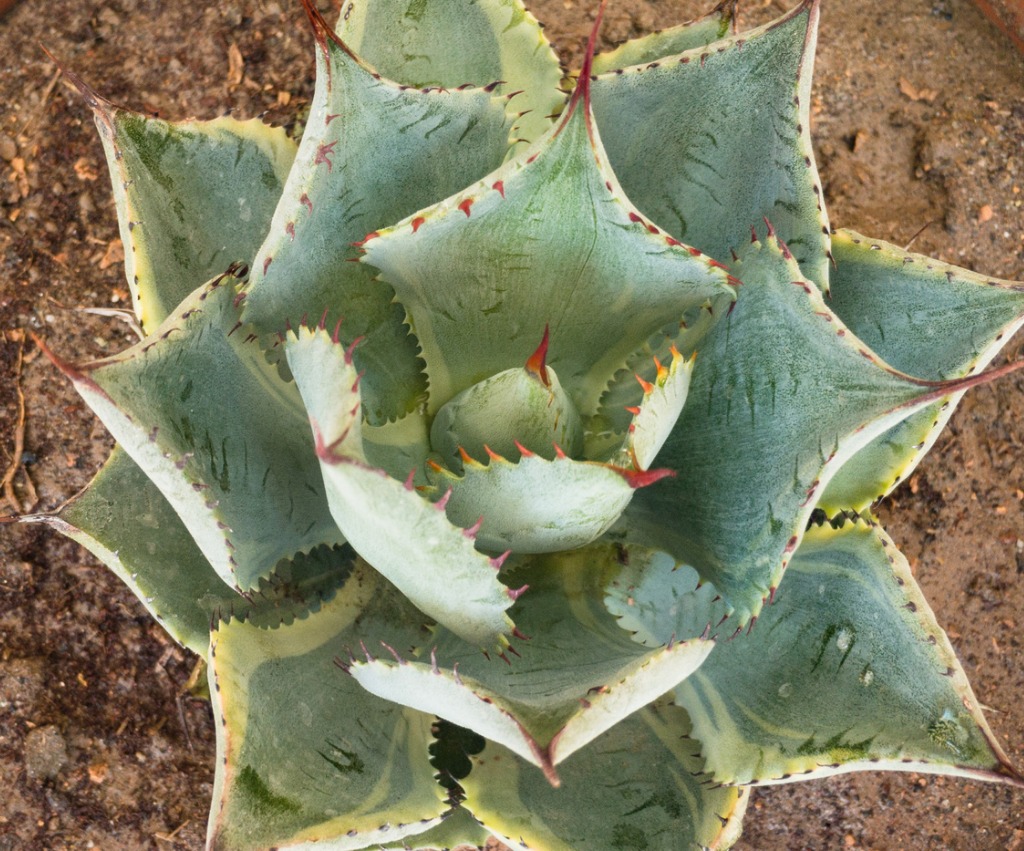Cabbage Head Agave
(Agave parrasana)

Description
Agave parrasana, the cabbage head agave or cabbage head century plant, is a flowering plant in the family Asparagaceae. A slow-growing evergreen succulent from North East Mexico, it produces a compact rosette of fleshy thorn-tipped grey-green leaves, 60 cm tall and wide. The leaves are blue green and the thorns are red. The whole plant may reach 100 centimeters tall and wide. Occasionally mature plants produce a spectacular flower head up to 6m tall, opening red and turning yellow. This signals the death of the flowering rosette, however offsetsmay form and continue growing. As it can tolerate temperatures of −12 °C (10 °F) or less, it is a popular plant to grow outdoors in a sheltered cactus garden or similar environment, and has gained the Royal Horticultural Society’s Award of Garden Merit. In the US, it may be grown outdoors in USDA hardiness zones 7–10. It is susceptible to scale and chlorosis resulting from magnesium deficiency. Agave is a genus of monocots native to the hot and arid regions of the Americas, although some Agave species are also native to tropical areas of South America. The genus Agave (from the Ancient Greek αγαυή, agauê) is primarily known for its succulent and xerophytic species that typically form large rosettes of strong, fleshy leaves. Agave now includes species formerly placed in a number of other genera, such as Manfreda, ×Mangave, Polianthes and Prochnyanthes. Many plants in this genus may be considered perennial, because they require several to many years to mature and flower. However, most Agave species are more accurately described as monocarpic rosettes or multiannuals, since each individual rosette flowers only once and then dies; a small number of Agave species are polycarpic. Maguey flowers are considered edible in many indigenous culinary traditions of Mesoamerica. Along with plants from the closely related genera Yucca, Hesperoyucca, and Hesperaloe, various Agave species are popular ornamental plants in hot, dry climates, as they require very little supplemental water to survive. Most Agave species grow very slowly. Some Agave species are known by the common name "century plant". The succulent leaves of most Agave species have sharp marginal teeth, an extremely sharp terminal spine, and are very fibrous inside. The stout stem is usually extremely short, which may make the plant appear as though it is stemless.
Taxonomic tree:







